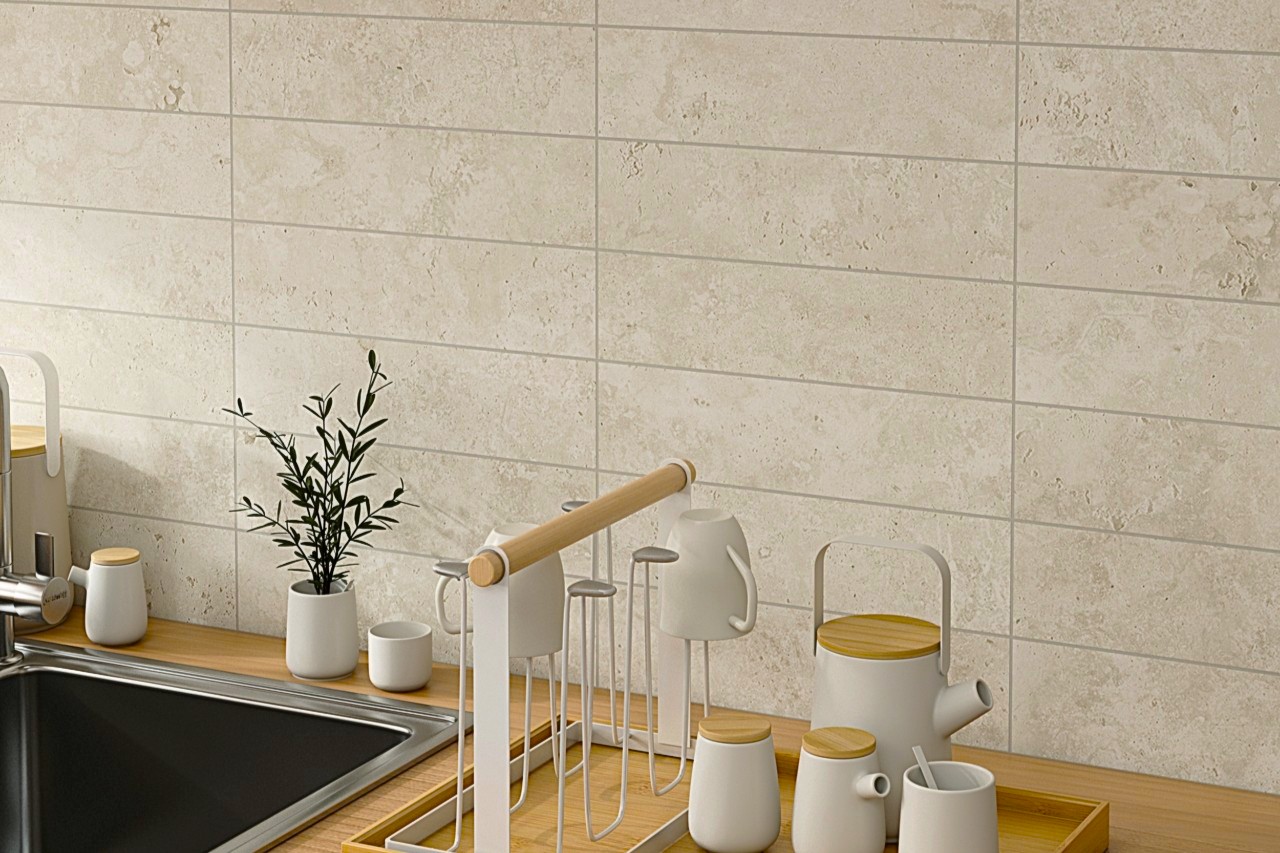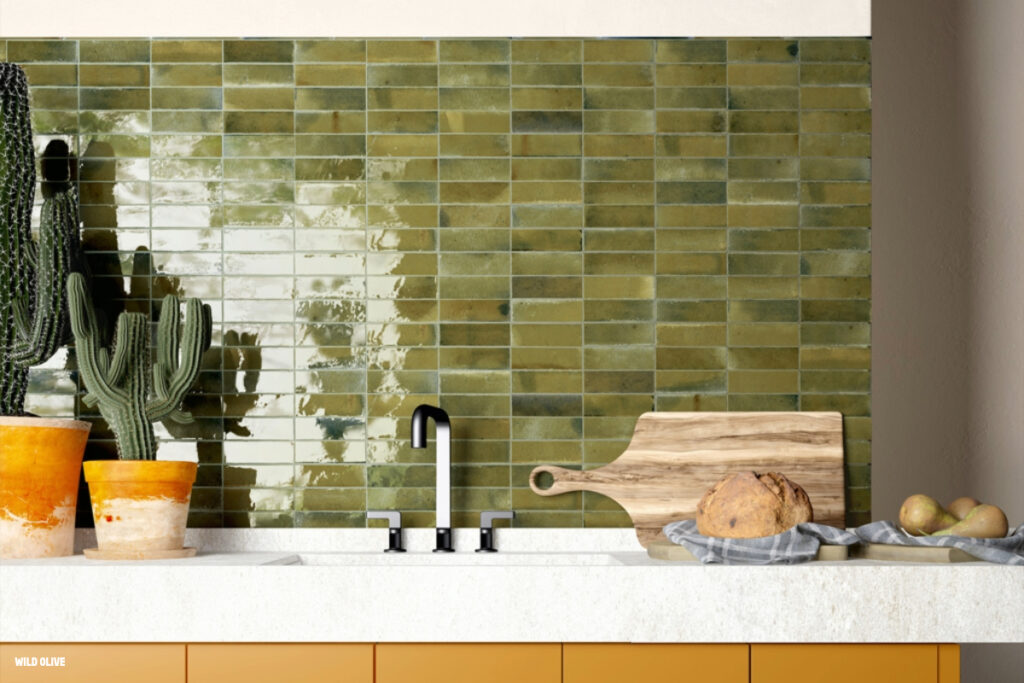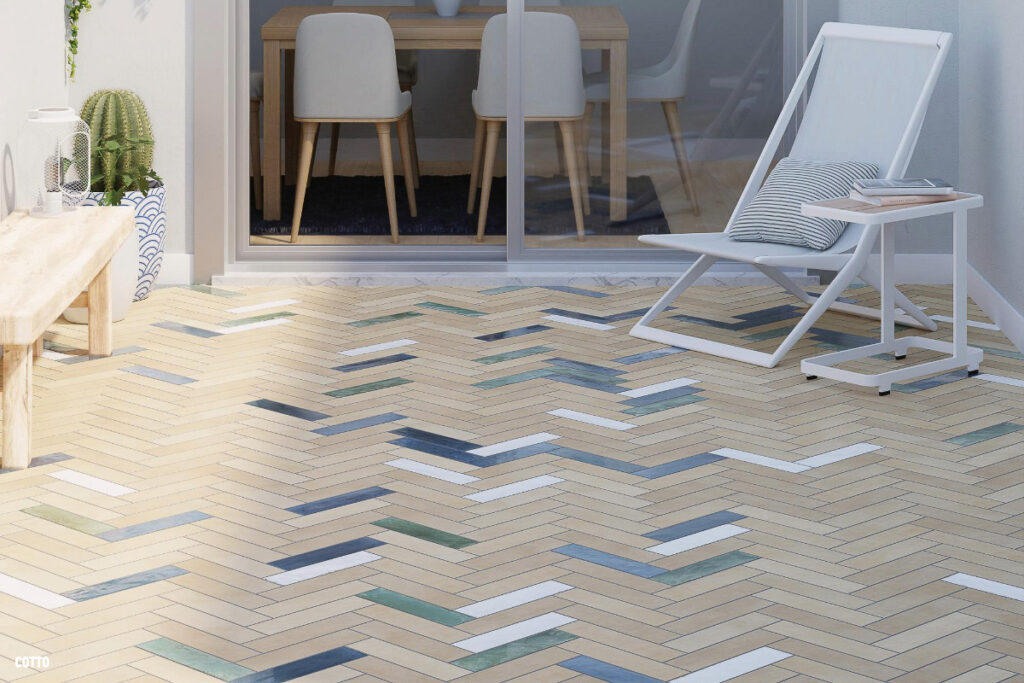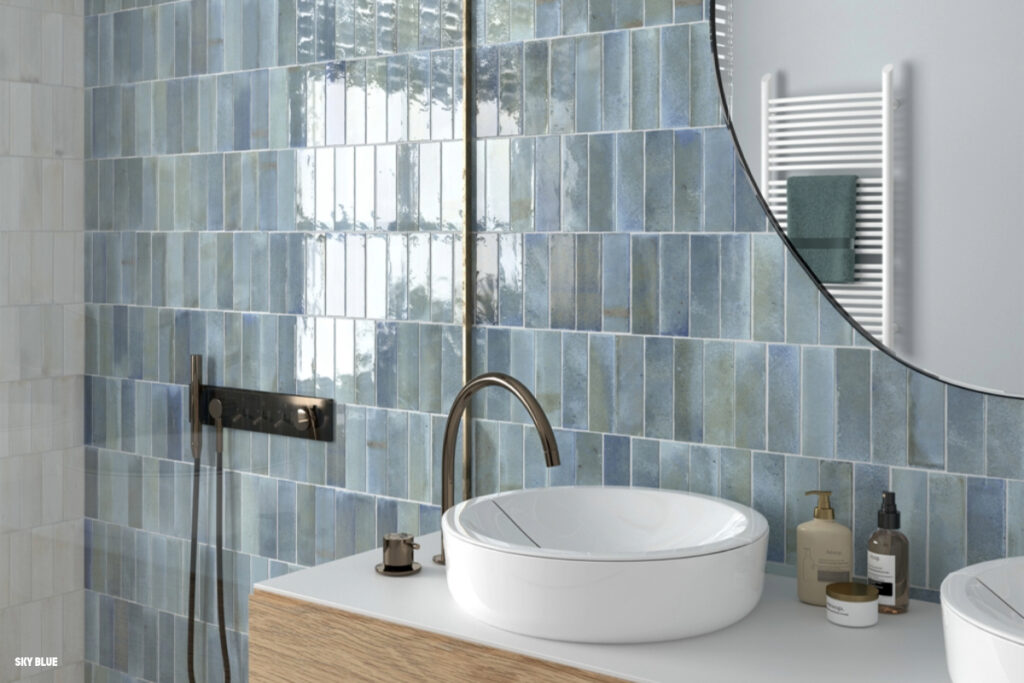
Subway tiles have long outgrown their utilitarian beginnings. Once the hallmark of early 20th-century train stations, these rectangular ceramics now hold court in some of the world’s most sophisticated interiors.
From pared-back minimalism to richly layered design, the layout of subway tiles can dramatically shape the feel of a space. At ShowTile, we believe that format matters. While colour and finish define mood, it’s the layout that delivers personality.
So, whether you’re styling a kitchen splashback, a bathroom wall, or a full architectural feature, these ten layouts offer inspiration to elevate your next design.
1. Classic Brick Bond
Considered the most iconic arrangement, brick bond offers timeless charm. Each tile is offset by half the width of the one below it, mimicking traditional brickwork.
Best used with: white subway tiles for a clean, crisp look
Where it works: Kitchen tiles, bathrooms, laundry splashbacks, and entryways
Effect: Balanced, approachable, quietly traditional
2. Vertical Stack
By aligning tiles vertically in a grid, this layout elongates the eye and draws attention upward.
Best used with: green subway tiles or blue subway tiles for architectural impact
Where it works: Shower walls, powder rooms, tight nooks
Effect: Modern, refined, space-enhancing
3. Horizontal Stack
This layout maintains a linear rhythm but with a more minimalist tone. Tiles are placed end-to-end in perfect horizontal rows.

Best used with: grey subway wall tiles for a soft, contemporary palette
Where it works: Kitchen subway tiles, vanity walls, small bathrooms
Effect: Structured, streamlined, gallery-like
4. Herringbone
One of the most popular modern layouts, herringbone, introduces movement and complexity. Laid at 45 degrees, tiles form an arrow-like pattern.

Best used with: subway wall tiles in neutral tones
Where it works: Bathroom floor tiles, splashbacks, full-height feature walls
Effect: Dynamic, engaging, directional
5. Double Herringbone
This is herringbone with a twist. Pairs of tiles are laid together before being set in the zigzag pattern, creating a more substantial impression.
Best used with: black subway tiles for a bold, graphic statement
Where it works: Entryways, backsplashes, architectural niches
Effect: Bold, geometric, rhythmic
6. Chevron
Similar to herringbone but with clean mitred edges, chevron feels more sculptural and intentional.
Best used with: Gloss-finish subway tiles for shimmer and light play
Where it works: Shower walls, fireplace surrounds, narrow hallways
Effect: Elegant, symmetrical, sculpted
7. Basket Weave
A traditional layout with timeless appeal, basket weave alternates vertical and horizontal pairs, evoking woven texture.
Best used with: white subway tiles and contrasting grout
Where it works: Bathrooms with classic detailing, small-format floor spaces
Effect: Textural, vintage-inspired, decorative
8. Crosshatch
This layout stacks tiles in a grid, but uses alternating colours or finishes to create crosshatch-like visual breaks.
Best used with: A combination of blue and white subway tiles, or gloss and matt finishes
Where it works: Feature walls, backsplashes, commercial spaces
Effect: Graphic, contemporary, confident
9. Offset Vertical
Tiles are laid vertically, but offset rather than stacked. It adds height and playfulness without strict symmetry.
Best used with: grey or green subway wall tiles.
Where it works: Bathroom tiles, kitchen splashbacks, bar backs
Effect: Fresh, layered, subtly unexpected
10. Mixed Orientation Feature Wall
Combining two or more layouts in one zone—stacked with herringbone, or vertical with chevron—this method offers bold individuality.
Best used with: Tonal variations in the same colour (e.g. gloss and matt black subway tiles)
Where it works: Statement walls, alcoves, architectural recesses
Effect: Creative, textural, designer-led
Choosing the Right Finish
Layout may guide the eye, but finish defines the light.
Finish matters especially in coloured tiles: green, blue, and grey subway tiles all behave differently under light, depending on surface treatment.
Glossy subway wall tiles reflect and expand the space, ideal for dimly lit bathrooms or compact kitchens.
Matt subway tiles absorb light, lending depth and softness. Use matt finishes in grid or stack formats for a calmer, architectural effect.
Pair glossy finishes with structured layouts like chevron or herringbone for a dynamic sheen.
Where to Feature Subway Tiles

Subway wall tiles offer visual clarity and layout versatility across a range of spaces:
- Bathrooms: Use stacked or herringbone patterns in showers and vanity splashbacks.
- Kitchens: Classic brick bond or vertical stack makes for an elegant splashback.
- Entryways: Basket weave or offset vertical patterns bring subtle interest.
- Bar areas or pantries: Gloss finishes and bold colours elevate compact spaces.
- Commercial spaces: Crosshatch or mixed-orientation walls create strong design statements with minimal material.
Subway Tile Sizing and Scale
While layout and finish play a major role in how subway tiles are perceived, dimensions also shape the overall aesthetic.
When selecting subway tiles, consider how scale, proportion, and layout will interact within the space. The same tile in a different size can shift the room’s mood entirely.
Traditional subway tiles measure around 75 x 150 mm, but modern interpretations now range from elongated rectangles to slimline finger formats.
Smaller tiles suit intricate layouts like herringbone, basket weave or chevron, where precision and pattern take centre stage. These are ideal for splashbacks, shower niches or feature bands.
Larger subway tiles create a cleaner, more monolithic feel. They work well across larger surfaces such as full-height bathroom walls or commercial fit-outs where continuity matters.
Tile size also impacts grout visibility. More tiles mean more joints, which adds rhythm and texture. Fewer joints mean a smoother, calmer finish, which is particularly effective in tonal palettes like grey or blue subway tiles.
Don’t Overlook Grout
Grout is more than filler. It’s a design choice.
High-contrast grout can outline patterns like herringbone or basket weave. Tonal grout softens edges and creates cohesion.
Use white grout with black subway tiles for a graphic look, or match grout to grey subway tiles for a seamless feel.
Small Tile, Big Possibility
Subway tiles are proof that subtlety can be powerful.
With just a shift in orientation or layout, you can redefine how a space feels and flows.
From classic to bold, soft to sculptural, subway tiles invite endless reinvention.
To explore our range of curated subway tiles or to request layout samples tailored to your project, contact the Show Tile team at (02) 9709 5836 or sales@showtile.com.au or visit our Sydney showroom.
Discover our subway tile collection.


